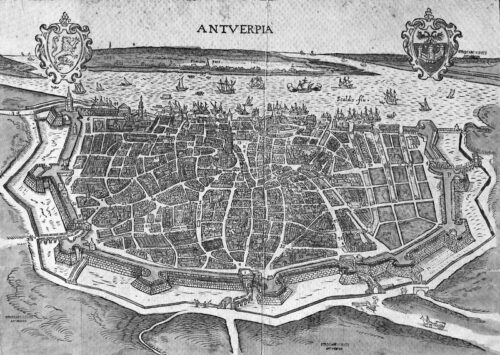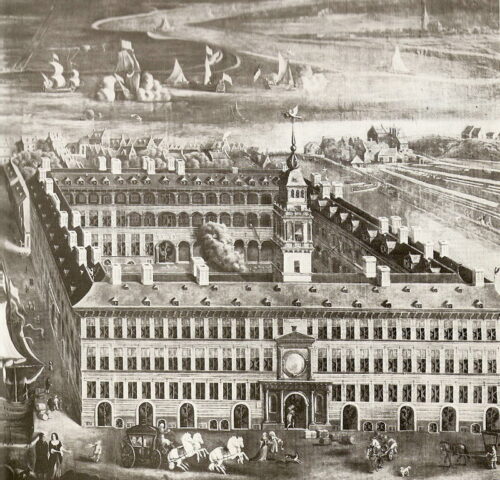Early Adulthood
Several printing presses start operating by the first half of the 16th century, the city’s prospering guilds construct impressive new houses built in late-Gothic style, and the monumental Cathedral of Our Lady is finally completed in 1521 after nearly 170 years of construction works becoming the largest Gothic church in the Low Countries. Het Steen, is completely rebuilt (1520) by Emperor Charles V and is renamed “s Heeren Steen” (the King’s stone castle). A few years later (1527) St. Andrew’s Church is also consecrated.
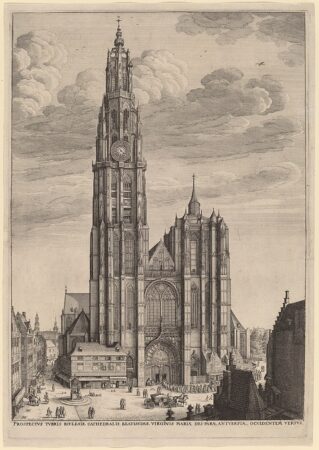
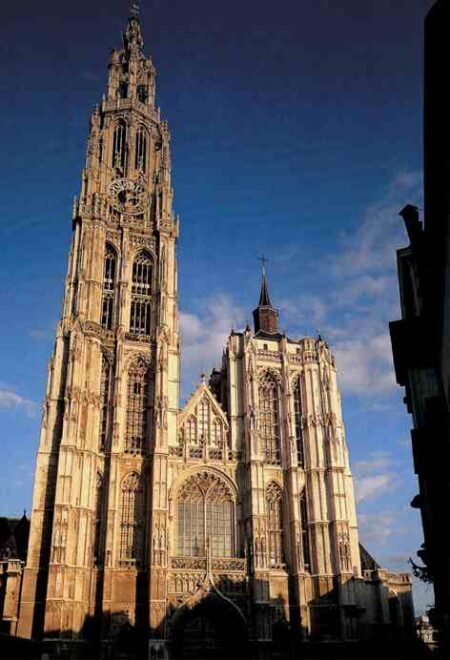
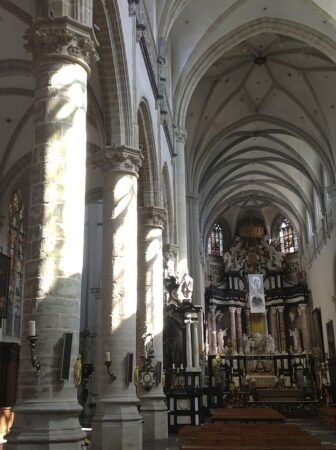
In 1531 the new Exchange building, the Handelsbeurs is completed to accommodate the explosive expansion of the city’s trade activities. Until then the traders used to sell their products in public squares and were mostly concentrated in the courtyard of the ‘Den Rhijn’ warehouse for years.
In 1540 the first plan for a new grand Gothic town hall that would replace the old medieval edifice was first drafted. Religious tension and the threat of an imminent war between Catholics and Protestants halted the project until 1560 when new plans this time in the modern Renaissance style were developed.
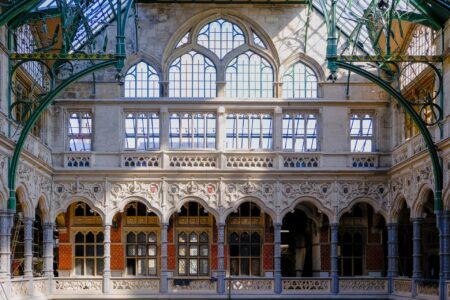

At last in 1561 a glorious new Stadhuis (City Hall) that would inspire a series of architectural projects in the Netherlands, Germany, and elsewhere, was set in motion on the western side of the city’s Great Market Square (Grote Markt). In 1565 it was ready for use.
In 1549 Charles V Emperor of the Holy Roman Empire and King of Spain issues an edict that re-organizes the Burgundian Netherlands in the so-called Seventeen Provinces that were to remain united and inherited by one heir. Six years later his will would materialize with his son Philip II of Spain taking the helm of the realm.
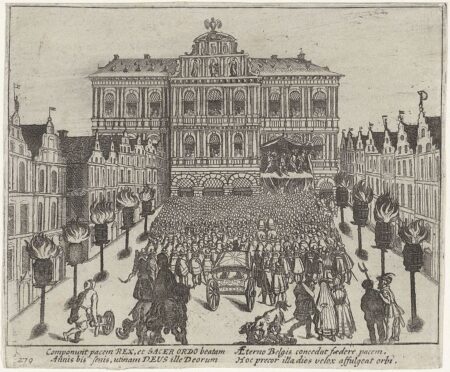
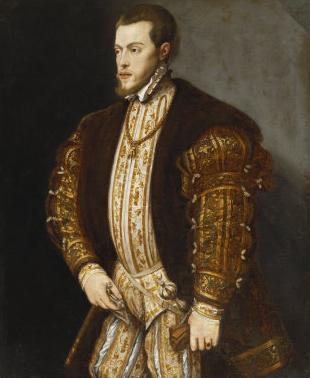
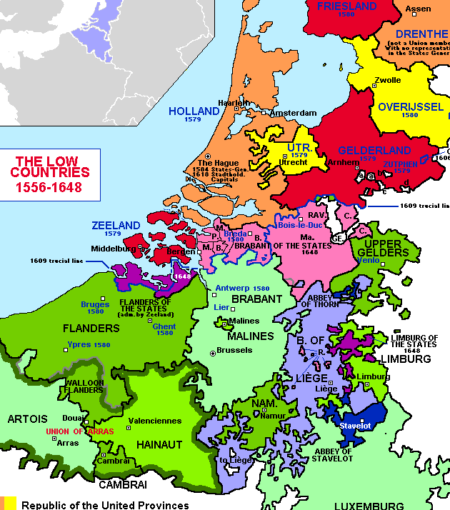
With the volume of world trade becoming bigger by the day the size of the ships was only natural to increase as well. The size of larger ships started to become a problem, especially during the periods of the low tide of the Scheldt when dozens of ships were being forced to wait for weeks before they could load and unload their cargo.
The solution would be given by an entrepreneur named Gilbert Schoonbeke, who offered to fund the construction of a new section of the city (Nieuwstad), north of the ancient star-shaped wall and moat of the existing city. The swampy 25 hectares area was placed within the walls with the construction that took place in the early 1550s and was completed in 1555.
New deeper canals were dug up creating new waterways that could easily facilitate big caravels and galleons up to 200 tonnes each. The new piers needed new hands, the new hands needed something to drink. Sixteen new breweries were built in the Nieuwstad from 1552 to 1556.
The Waterhuis, the new aqueduct built by Schoonbeke in 1554 fueled the new neighborhood with much-needed fresh water. In 1560 the imposing Oostershuis, the seat of the German Hanseatic League is erected. Nieuwstad‘s urbanization would be the largest project of the mid-16th century in the European continent.
